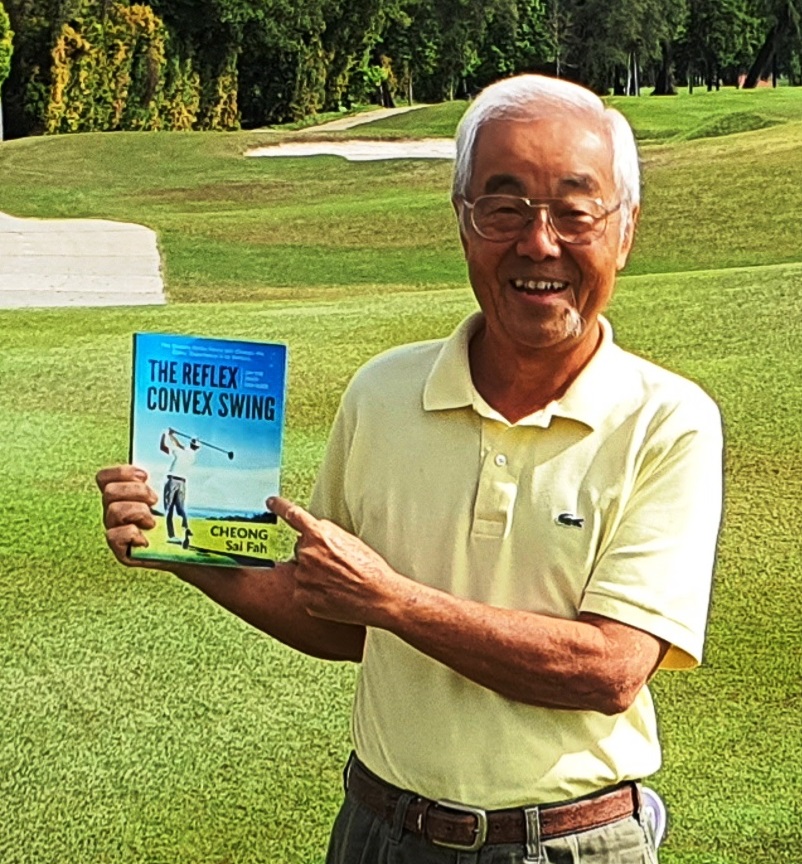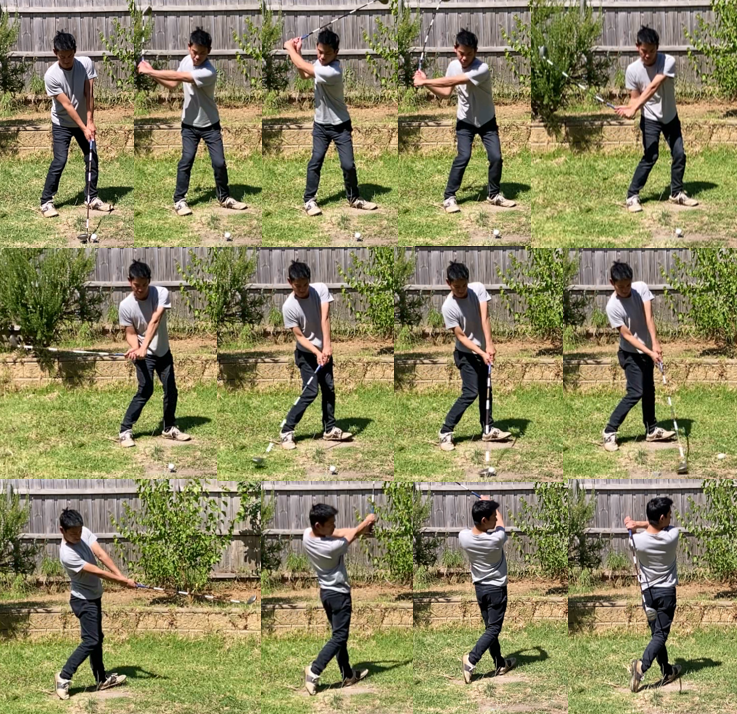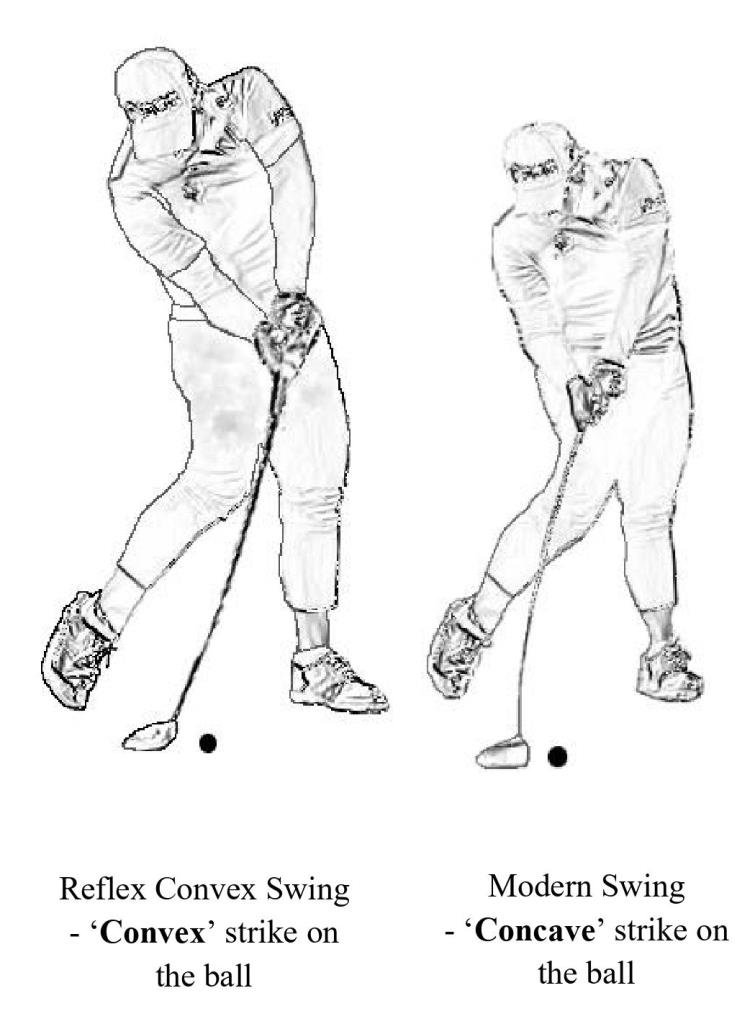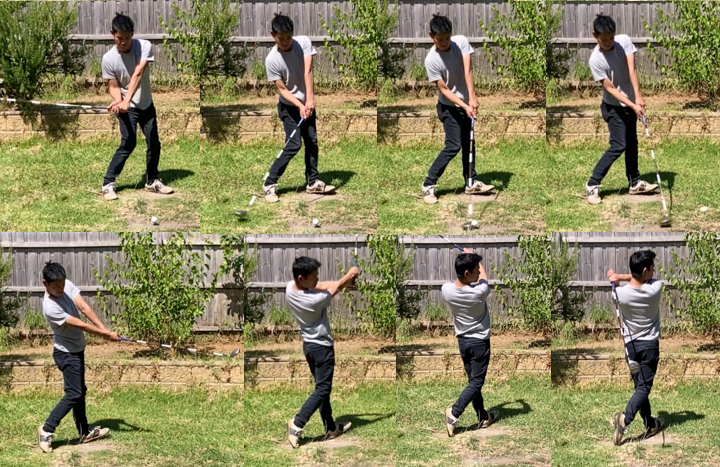By Cheong Sai Fah
The Reflex Convex Swing was published in 2020, documenting my lifelong search for a golf swing that can be played reflexively.

A few months ago, Alex Goh, who resides in Melbourne Australia, asked me to coach him on acquiring the Convex Swing. Through emails, Alex sent his swing sequences to me for review. As a result of numerous interactive exchanges, Alex was able to acquire the Convex Swing.
This process was facilitated by Alex’s deep knowledge and understanding of the golf swing. In particular, Alex was familiar with the Mindy Blake swing. He was able to appreciate the underlying concepts of the Convex Swing, which were built on the ideas of Blake and Ben Hogan, and field sports.
The swing sequence displayed below shows that the Convex Swing can match the best professional swings. It shows that Alex is very close to a convex strike on the ball. To achieve the convex strike, he needs to increase the rotational movement of his lower body perhaps another 20%.
The basic Convex Swing is easy to learn and play. Alex has been hitting the ball more solidly than ever and has gained one club length in driving distance.
Alex’s swing is a precursor to one that can ultimately strike the ball with a convex bend shaft.

The ultimate Convex Swing uses three core principles:
1. The stance is narrow where the distance between the inner heels is that of between the armpits.
2. The feet at address are pre-turned towards the target, the right by 20 degrees and the left by 60 degrees.
3. The rotary movement of the lower body is the primary source of power.
The downswing rotational power of the lower body is delivered by moving rapidly over a narrow stance and accentuated by pivoting on the left heel and fan-sliding open the pre-turned left foot. This innovative ‘pivot and fan-slide’ move is virtually ‘frictionless’; it enhances the mechanical efficiency of the entire swing.

The Convex Swing can enable golfers with high enough swing speeds to strike the ball with a convex bend shaft. The convex strike can deliver significantly longer distances. The threshold swing speed for a convex strike is within the reach of low handicap golfers and professionals of both genders.
The convex bend is strong enough for a vaulting pole to propel the athlete over the bar. By contrast, professional golfers have employed a concave bend shaft to strike the ball. The convex bend is stronger than the concave. That is enough reason to use it to strike a golf ball, delivering perhaps 10 to 20 percent more distance.
When that happens, the Convex Swing will disrupt the golf swing and revolutionize the game. The convex strike is the only way forward, simply because the convex bend is the stronger bend. And there is no third way to bend a golf shaft.
For more information, visit convexswing.com

About The Author
A single-handicap golfer in his heyday, Cheong Sai Fah recently turned 80 but remains an avid golfer at his home club, The Royal Selangor Golf Club.
A process engineer by training and vocation , Cheong was mainly involved in the rubber industry until his retirement in 1996.
Taking up golf in 1972, Cheong developed a fascination with the mechanics of the golf swing and was largely influenced by two books – Ben Hogan’s Five Lessons and Mindy Blake’s The Golf Swing of the Future.
Cheong completed he first draft of The Reflex Convex Swing in the late 1990s and was finally able to get it published in 2020.














